2022-2023学年仁爱版英语八年级上册期末复习 Units 3-4知识点总结 课件 (共37张PPT)
文档属性
| 名称 | 2022-2023学年仁爱版英语八年级上册期末复习 Units 3-4知识点总结 课件 (共37张PPT) | 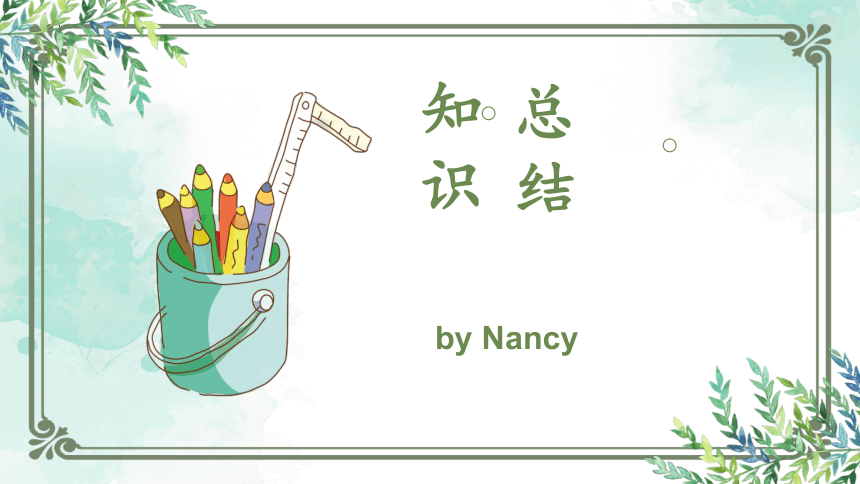 | |
| 格式 | pptx | ||
| 文件大小 | 14.8MB | ||
| 资源类型 | 教案 | ||
| 版本资源 | 仁爱科普版 | ||
| 科目 | 英语 | ||
| 更新时间 | 2022-12-10 07:58:47 | ||
图片预览

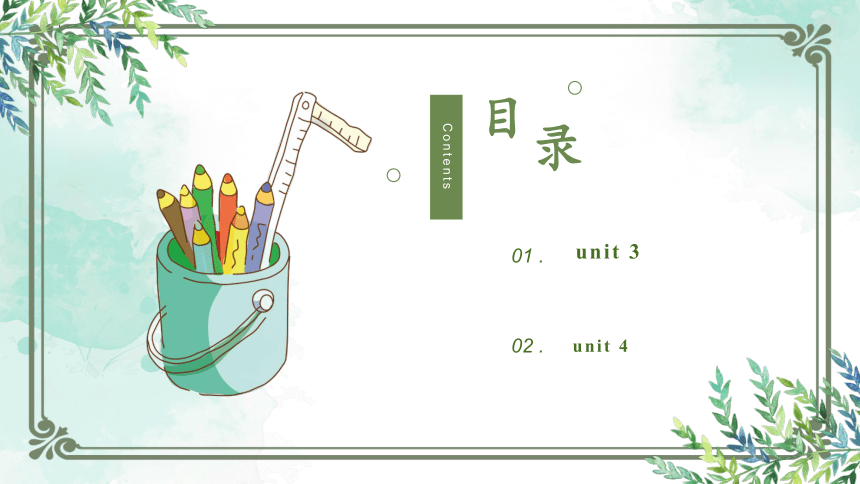
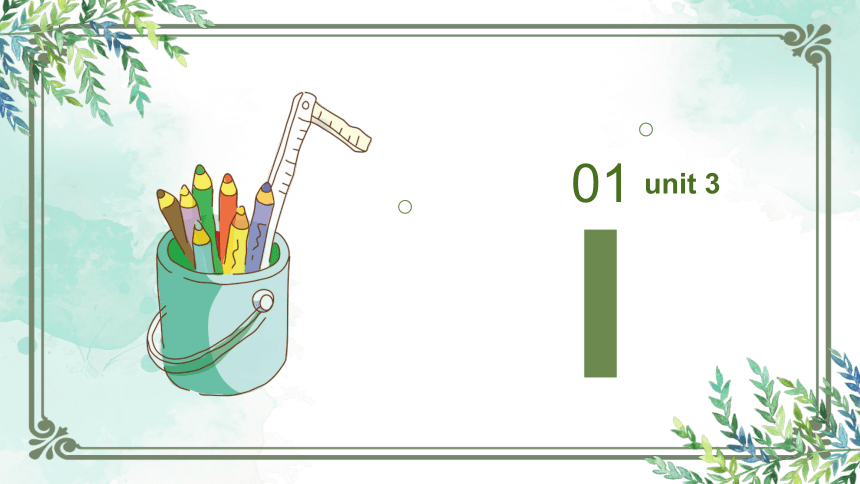
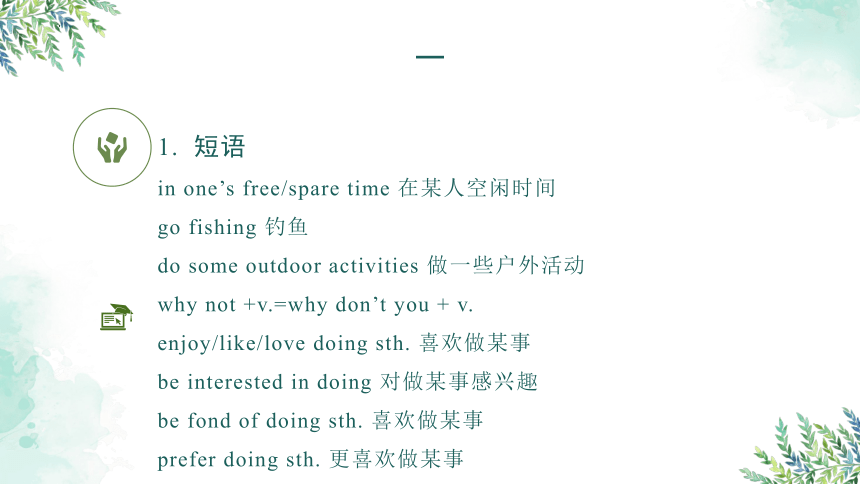
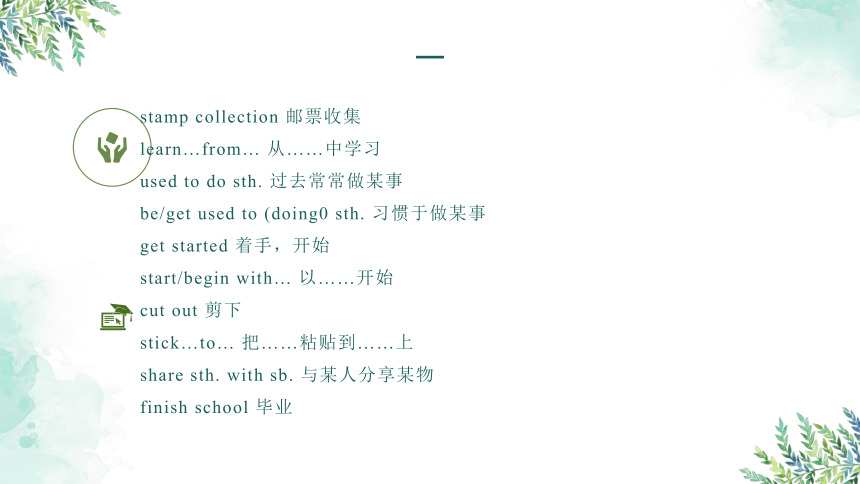
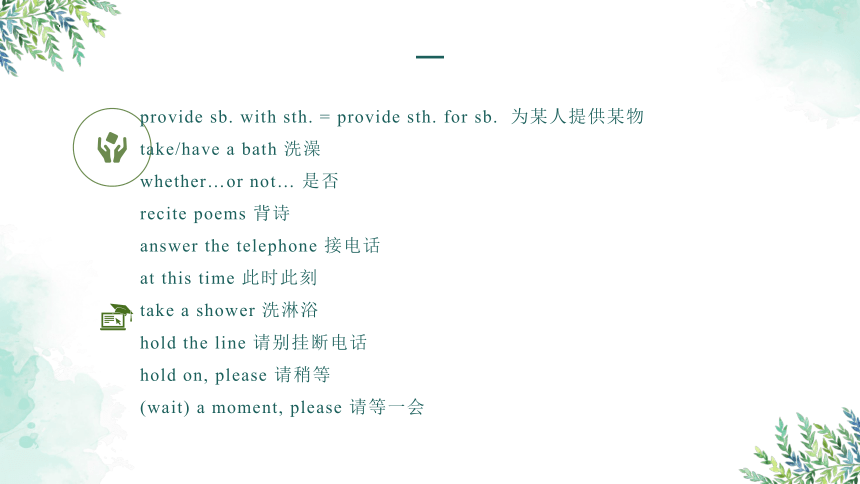
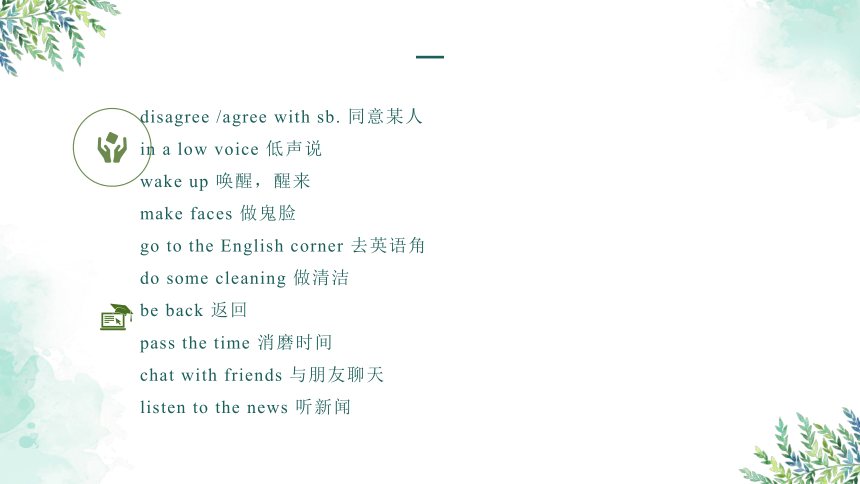
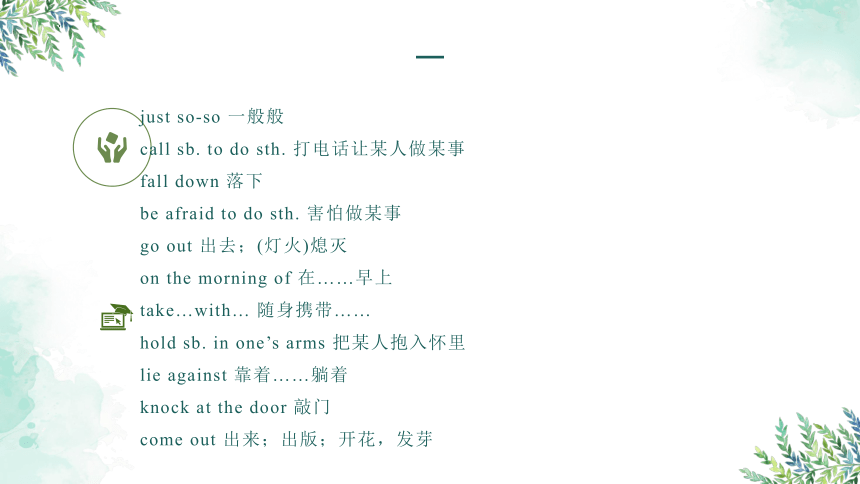
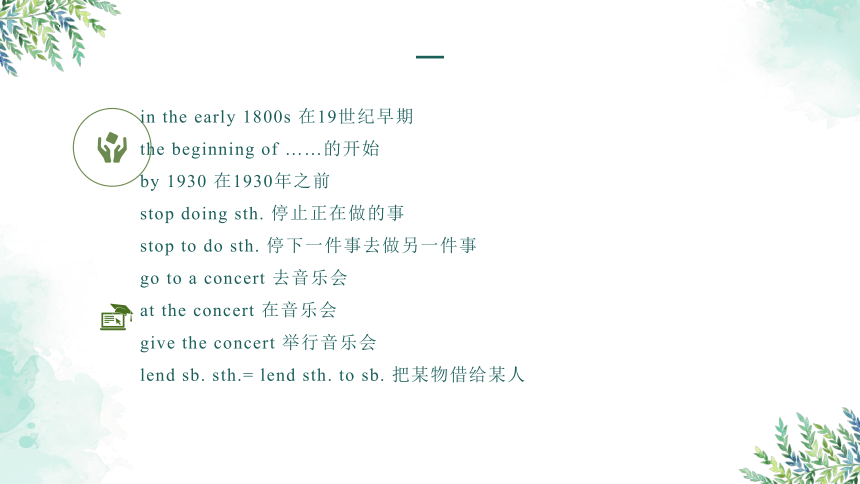
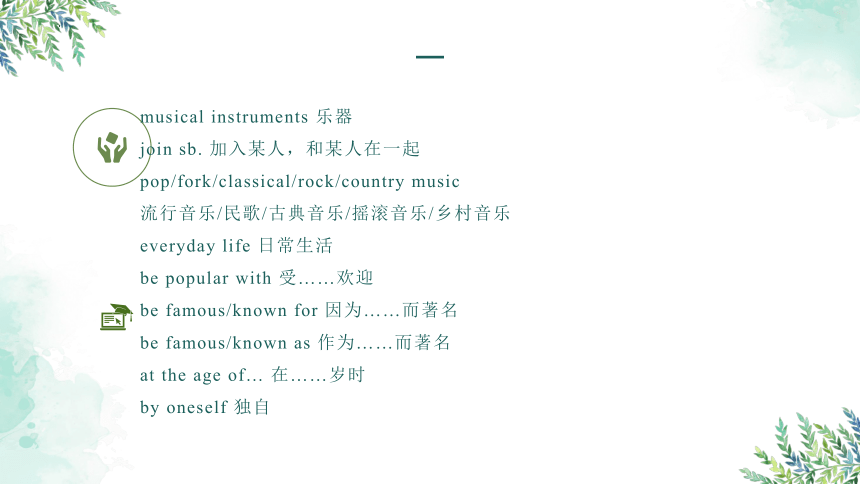
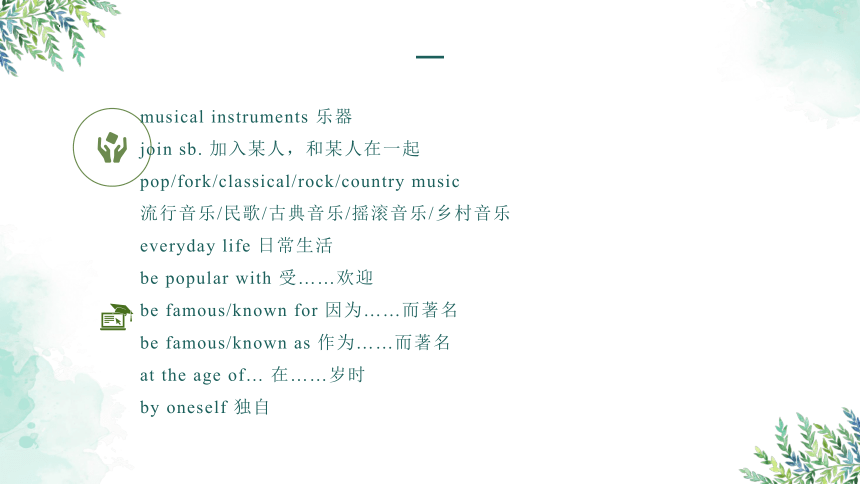
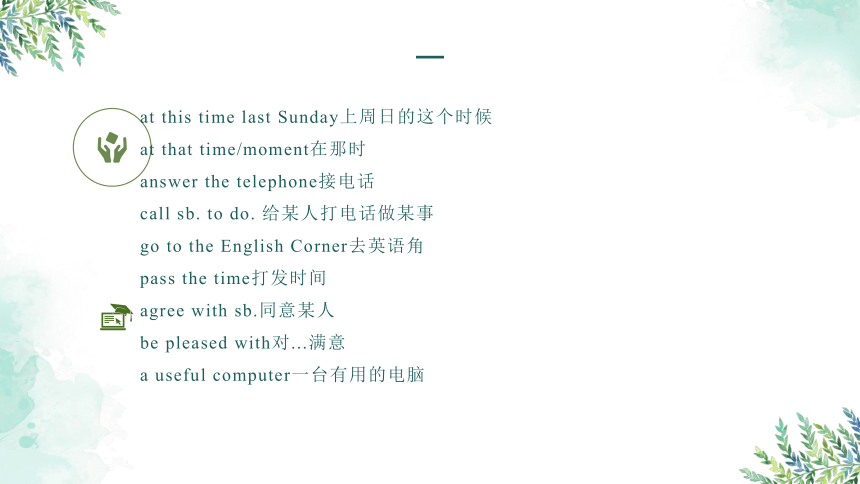
文档简介
(共37张PPT)
总结
知识
by Nancy
unit 3
unit 4
01 .
02 .
Contents
录
目
01
unit 3
1. 短语
in one’s free/spare time 在某人空闲时间
go fishing 钓鱼
do some outdoor activities 做一些户外活动
why not +v.=why don’t you + v.
enjoy/like/love doing sth. 喜欢做某事
be interested in doing 对做某事感兴趣
be fond of doing sth. 喜欢做某事
prefer doing sth. 更喜欢做某事
stamp collection 邮票收集
learn…from… 从……中学习
used to do sth. 过去常常做某事
be/get used to (doing0 sth. 习惯于做某事
get started 着手,开始
start/begin with… 以……开始
cut out 剪下
stick…to… 把……粘贴到……上
share sth. with sb. 与某人分享某物
finish school 毕业
provide sb. with sth. = provide sth. for sb. 为某人提供某物
take/have a bath 洗澡
whether…or not… 是否
recite poems 背诗
answer the telephone 接电话
at this time 此时此刻
take a shower 洗淋浴
hold the line 请别挂断电话
hold on, please 请稍等
(wait) a moment, please 请等一会
disagree /agree with sb. 同意某人
in a low voice 低声说
wake up 唤醒,醒来
make faces 做鬼脸
go to the English corner 去英语角
do some cleaning 做清洁
be back 返回
pass the time 消磨时间
chat with friends 与朋友聊天
listen to the news 听新闻
just so-so 一般般
call sb. to do sth. 打电话让某人做某事
fall down 落下
be afraid to do sth. 害怕做某事
go out 出去;(灯火)熄灭
on the morning of 在……早上
take…with… 随身携带……
hold sb. in one’s arms 把某人抱入怀里
lie against 靠着……躺着
knock at the door 敲门
come out 出来;出版;开花,发芽
in the early 1800s 在19世纪早期
the beginning of ……的开始
by 1930 在1930年之前
stop doing sth. 停止正在做的事
stop to do sth. 停下一件事去做另一件事
go to a concert 去音乐会
at the concert 在音乐会
give the concert 举行音乐会
lend sb. sth.= lend sth. to sb. 把某物借给某人
musical instruments 乐器
join sb. 加入某人,和某人在一起
pop/fork/classical/rock/country music
流行音乐/民歌/古典音乐/摇滚音乐/乡村音乐
everyday life 日常生活
be popular with 受……欢迎
be famous/known for 因为……而著名
be famous/known as 作为……而著名
at the age of… 在……岁时
by oneself 独自
musical instruments 乐器
join sb. 加入某人,和某人在一起
pop/fork/classical/rock/country music
流行音乐/民歌/古典音乐/摇滚音乐/乡村音乐
everyday life 日常生活
be popular with 受……欢迎
be famous/known for 因为……而著名
be famous/known as 作为……而著名
at the age of… 在……岁时
by oneself 独自
at this time last Sunday上周日的这个时候
at that time/moment在那时
answer the telephone接电话
call sb. to do. 给某人打电话做某事
go to the English Corner去英语角
pass the time打发时间
agree with sb.同意某人
be pleased with对...满意
a useful computer一台有用的电脑
2.agree的用法
(1) agree with 后常接人或what引导的从句,表同意某人
(2) agree to sth.,表“同意某事”,接表示建议、计划、条件、安排等的词
(3) agree to do sth 表“同意去做某事”
(4) agree on/ about sth. 关于某事方面表示同意
(5) agree + that从句子
3. provide的用法
①provide sb with sth= provide sth for sb
为某人提供某物
② offer sb sth= offer sth to sb
4. lend的用法
①lend sb sth= lend sth to sb借某物给某人
② lend sth to sb= borrow sth from sb
5. 过去进行时的用法
①定义: 过去进行时表示过去某一时刻正在进行或发生的动作,也表示过去一段时间内的活动或那个阶段正在进行的动作
②过去进行时由be (was/were)+动词ing 形式构成的,
肯定句:主语+was/were +doing +…
否定句: 主语+wasn’t/weren’t +doing +…
一般疑问句: Was/Were+主语+doing+…
肯定回答:Yes, 主语+was/were.
否定回答:No, 主语+wasn’t/weren’t.
③时间状语
at 8:30 last night昨晚八点半
at that time yesterday在昨天那个时候
或者是根据前后句意来进行判断
6. 宾语从句中if/whether的辨析
(1)whether 可以和 or (not) 合在一起使用,也可以分开使用,但 if 可以只能在口语中与 or not 分开使用。
(2)whether后可接不定式,而if不能。
(3)whether可置于句首引导主语从句,而if不能。
(4)whether可用在介词之后,引导宾语从句,而If则不能。
(5)whether可引导表语从句,if则不能。
(6).在有些动词(如discuss)之后,只能用whether,而不用if引导宾语从句。
7. used的用法
used to do sth. 过去常常做某事(to为动词不定式符号)
注意; used to do的否定形式为didn’t use to do/usedn’t to do
be/get usedto (doing) sth. 习惯于(做)某事(to是介词,后接名词、代词或动名词)
8. 感叹句的结构
①what引导感叹句的基本构成为:
what + a / an +(形容词)+可数名词单数!
what +(形容词)+可数名词复数/不可数名词!
②how引导感叹句的基本构成为:
how+(形容词) + a / an +可数名词单数+主语+谓语!
how +形容词/副词+主语+谓语!
how+主语+谓语!
02
unit 4
1. 短语:
be free 空闲;自由
visit a friend 拜访朋友
on Sunday 在星期日
on Sunday morning 在星期日早上
go to the West Hill 去西山
make a plan for… 为…制定计划
make a picnic plan 订一份野炊计划=make a plan for a picnic
tomorrow afternoon 明天下午
tell sb about sth 告诉某人有关事项
tell sb to do sth 告诉某人做……
tell sb not to do sth 告诉某人不要做……
right away 立刻;马上
go swimming 去游泳
go out for a picnic 出去野炊= go for a picnic=have a picnic
make a telephone call 打电话
do some shopping 购物= go shopping
go home 回家
come back 回来
speak to sb跟某人说话
take a message 捎口信
ask sb to do sth 叫/要求某人做某事
call sb back 给某人回电话
give sb a call 给某人打电话 = call sb
call sb at +号码 给某人打……
give sb a message 给某人口信/消息
get some water 提水
prepare food 准备食物
wash the dishes 洗碗筷
like to do sth =like doing sth 喜欢做……
want to do sth =would like to sth 想要做……
sing a song / songs 唱歌
look at a picture 看图
read a book 看书 = read books
do one’s homework 做作业
play the guitar 弹吉他
fly a kite 放风筝= fly kites
run after sb / sth 追逐某人/某物
sing a song= sing (some) songs 唱歌
take sth with sb 把……带在身上
on one’s way to+地点= on the way to+地点
have to/has to +动词原形(注意:当主语是三单的时候,用has to)
think about 思考,考虑
the beauty of nature 自然美
run after 追逐
live a happy life 过着愉快的生活
keep a pet dog 养宠物狗
as we know 众所周知
share sth. with sb. 与某人分享某物
provide sth. for sb. = provide sb. with sth. 为某人提供某物
nowhere else 没别的地方
fall down 倒塌,跌倒
ose one’s lives/homes 失去某人生命/家园
protect…from… 保护……免受……
the number of ……的数量 a number of 许多,大量
hear about 听说
run out of 逃出……
stay/keep/get away from 远离……
remember to do sth.记得要去做某事
remember doing sth. 记得做过某事
be important to sb. 对某人很重要
keep sb./sth. doing sth. 让……一直做某事
play an important part/role 扮演重要的角色
die out 灭绝14.feed on (动物)以……为食live on (人类)以……为食
in number 在数量方面
be in danger 处于危险之中
There will be/there is/are going to be 将会有
turn off/ on关闭,打开
return to normal life 返回正常生活
2. find /find out,/look for的辨析
(1) find out “找出,发现,查明”,表示搞清楚、弄明白,而且是经过研究、计算、 探询等获知,得知。
(2) find “寻找”,是个及物动词,表示找到,主要强调寻找的结果,而不表示“寻找”的过程
(3) look for “寻找”;表示“寻找”的过程和动作。
3.sure的用法
(1)be sure to do sth 确定干某事
(2) be sure of/about sth对...很确信/确定
(3)be sure that+句子
(4)make sure确保
4. 常见词性词性转换
1)missing adj.失踪的,找不到的,丢失的,缺少的 miss v.思念,错过
2)sad adj.伤心的,悲伤的 sadness n.悲伤
3)build v.建造 building n.建筑物
rebuild v.重建,重组,使复原)
4)appear v.出现,显现,出场 appearance n.外貌,出现
5)injured adj.受伤的,有伤的 injure 损害,毁坏,伤害
6)knowledge n.知识,不可数
know v.知道;理解,明白
5. 反意疑问句的用法
1)当陈述部分含有以下这些含有否定意义的词时:few, little, seldom,hardly, never, not, no, no one, nobody, nothing, none, neither等,其反意疑问句需用肯定结构。
2)祈使句。祈使句后一般加上will you或won't you构成反意疑问句,用will you 多表示“请求”,用won't you 多表示提醒对方注意。
导的祈使句有两种情况:
(1)Let's...,后的反意疑问句用 shall we
(2)Let us/me...后的反意疑问句用will you
3) 陈述部分的主语是everything, nothing, anything或something 时,反意疑问句的主语应用代词it。
4) 陈述部分的主语是 everybody, everyone, anybody, anyone, somebody, someone, nobody,
no one, none, neither 时, 其反意疑问句的主语需用复数代词they。
5)感叹句。感叹句后加反意疑问句时,其反意疑问句需用be的一般现在时态的否定形式。
6.)陈述部分主、谓语是I am...时,反意疑问句用aren't I,
7.)当陈述部分所含的形容词是通过加前缀或后缀构成的,不能视为否定词
8.)当陈述部分主语是从句、不定式(短语)、动词-ing形式时,反意疑问句的主语应该用it。
9.)当陈述部分含I think (believe, suppose...)that... 结构时,其反意疑问句须与从句的主、谓语保持一致,
10. )陈述部分有have to 时,其反意疑问句要用助动词的否定形式。
11. )陈述部分有had better时,反意疑问句中要用hadn't。
12. )当陈述部分含有情态动词must时,我们便要分析一下must的含义。如果must 作“必须”讲,反意疑问句须用needn't;而当must作推测意义“一定是;必定”讲时,反意疑问句则需根据must后的动词原形选用相应的形式
6. must与have to的辨析
must受主观条件限制,表必须
have to受客观条件限制,表不得不
主讲老师:格迪天
Thanks a lot !
总结
知识
by Nancy
unit 3
unit 4
01 .
02 .
Contents
录
目
01
unit 3
1. 短语
in one’s free/spare time 在某人空闲时间
go fishing 钓鱼
do some outdoor activities 做一些户外活动
why not +v.=why don’t you + v.
enjoy/like/love doing sth. 喜欢做某事
be interested in doing 对做某事感兴趣
be fond of doing sth. 喜欢做某事
prefer doing sth. 更喜欢做某事
stamp collection 邮票收集
learn…from… 从……中学习
used to do sth. 过去常常做某事
be/get used to (doing0 sth. 习惯于做某事
get started 着手,开始
start/begin with… 以……开始
cut out 剪下
stick…to… 把……粘贴到……上
share sth. with sb. 与某人分享某物
finish school 毕业
provide sb. with sth. = provide sth. for sb. 为某人提供某物
take/have a bath 洗澡
whether…or not… 是否
recite poems 背诗
answer the telephone 接电话
at this time 此时此刻
take a shower 洗淋浴
hold the line 请别挂断电话
hold on, please 请稍等
(wait) a moment, please 请等一会
disagree /agree with sb. 同意某人
in a low voice 低声说
wake up 唤醒,醒来
make faces 做鬼脸
go to the English corner 去英语角
do some cleaning 做清洁
be back 返回
pass the time 消磨时间
chat with friends 与朋友聊天
listen to the news 听新闻
just so-so 一般般
call sb. to do sth. 打电话让某人做某事
fall down 落下
be afraid to do sth. 害怕做某事
go out 出去;(灯火)熄灭
on the morning of 在……早上
take…with… 随身携带……
hold sb. in one’s arms 把某人抱入怀里
lie against 靠着……躺着
knock at the door 敲门
come out 出来;出版;开花,发芽
in the early 1800s 在19世纪早期
the beginning of ……的开始
by 1930 在1930年之前
stop doing sth. 停止正在做的事
stop to do sth. 停下一件事去做另一件事
go to a concert 去音乐会
at the concert 在音乐会
give the concert 举行音乐会
lend sb. sth.= lend sth. to sb. 把某物借给某人
musical instruments 乐器
join sb. 加入某人,和某人在一起
pop/fork/classical/rock/country music
流行音乐/民歌/古典音乐/摇滚音乐/乡村音乐
everyday life 日常生活
be popular with 受……欢迎
be famous/known for 因为……而著名
be famous/known as 作为……而著名
at the age of… 在……岁时
by oneself 独自
musical instruments 乐器
join sb. 加入某人,和某人在一起
pop/fork/classical/rock/country music
流行音乐/民歌/古典音乐/摇滚音乐/乡村音乐
everyday life 日常生活
be popular with 受……欢迎
be famous/known for 因为……而著名
be famous/known as 作为……而著名
at the age of… 在……岁时
by oneself 独自
at this time last Sunday上周日的这个时候
at that time/moment在那时
answer the telephone接电话
call sb. to do. 给某人打电话做某事
go to the English Corner去英语角
pass the time打发时间
agree with sb.同意某人
be pleased with对...满意
a useful computer一台有用的电脑
2.agree的用法
(1) agree with 后常接人或what引导的从句,表同意某人
(2) agree to sth.,表“同意某事”,接表示建议、计划、条件、安排等的词
(3) agree to do sth 表“同意去做某事”
(4) agree on/ about sth. 关于某事方面表示同意
(5) agree + that从句子
3. provide的用法
①provide sb with sth= provide sth for sb
为某人提供某物
② offer sb sth= offer sth to sb
4. lend的用法
①lend sb sth= lend sth to sb借某物给某人
② lend sth to sb= borrow sth from sb
5. 过去进行时的用法
①定义: 过去进行时表示过去某一时刻正在进行或发生的动作,也表示过去一段时间内的活动或那个阶段正在进行的动作
②过去进行时由be (was/were)+动词ing 形式构成的,
肯定句:主语+was/were +doing +…
否定句: 主语+wasn’t/weren’t +doing +…
一般疑问句: Was/Were+主语+doing+…
肯定回答:Yes, 主语+was/were.
否定回答:No, 主语+wasn’t/weren’t.
③时间状语
at 8:30 last night昨晚八点半
at that time yesterday在昨天那个时候
或者是根据前后句意来进行判断
6. 宾语从句中if/whether的辨析
(1)whether 可以和 or (not) 合在一起使用,也可以分开使用,但 if 可以只能在口语中与 or not 分开使用。
(2)whether后可接不定式,而if不能。
(3)whether可置于句首引导主语从句,而if不能。
(4)whether可用在介词之后,引导宾语从句,而If则不能。
(5)whether可引导表语从句,if则不能。
(6).在有些动词(如discuss)之后,只能用whether,而不用if引导宾语从句。
7. used的用法
used to do sth. 过去常常做某事(to为动词不定式符号)
注意; used to do的否定形式为didn’t use to do/usedn’t to do
be/get usedto (doing) sth. 习惯于(做)某事(to是介词,后接名词、代词或动名词)
8. 感叹句的结构
①what引导感叹句的基本构成为:
what + a / an +(形容词)+可数名词单数!
what +(形容词)+可数名词复数/不可数名词!
②how引导感叹句的基本构成为:
how+(形容词) + a / an +可数名词单数+主语+谓语!
how +形容词/副词+主语+谓语!
how+主语+谓语!
02
unit 4
1. 短语:
be free 空闲;自由
visit a friend 拜访朋友
on Sunday 在星期日
on Sunday morning 在星期日早上
go to the West Hill 去西山
make a plan for… 为…制定计划
make a picnic plan 订一份野炊计划=make a plan for a picnic
tomorrow afternoon 明天下午
tell sb about sth 告诉某人有关事项
tell sb to do sth 告诉某人做……
tell sb not to do sth 告诉某人不要做……
right away 立刻;马上
go swimming 去游泳
go out for a picnic 出去野炊= go for a picnic=have a picnic
make a telephone call 打电话
do some shopping 购物= go shopping
go home 回家
come back 回来
speak to sb跟某人说话
take a message 捎口信
ask sb to do sth 叫/要求某人做某事
call sb back 给某人回电话
give sb a call 给某人打电话 = call sb
call sb at +号码 给某人打……
give sb a message 给某人口信/消息
get some water 提水
prepare food 准备食物
wash the dishes 洗碗筷
like to do sth =like doing sth 喜欢做……
want to do sth =would like to sth 想要做……
sing a song / songs 唱歌
look at a picture 看图
read a book 看书 = read books
do one’s homework 做作业
play the guitar 弹吉他
fly a kite 放风筝= fly kites
run after sb / sth 追逐某人/某物
sing a song= sing (some) songs 唱歌
take sth with sb 把……带在身上
on one’s way to+地点= on the way to+地点
have to/has to +动词原形(注意:当主语是三单的时候,用has to)
think about 思考,考虑
the beauty of nature 自然美
run after 追逐
live a happy life 过着愉快的生活
keep a pet dog 养宠物狗
as we know 众所周知
share sth. with sb. 与某人分享某物
provide sth. for sb. = provide sb. with sth. 为某人提供某物
nowhere else 没别的地方
fall down 倒塌,跌倒
ose one’s lives/homes 失去某人生命/家园
protect…from… 保护……免受……
the number of ……的数量 a number of 许多,大量
hear about 听说
run out of 逃出……
stay/keep/get away from 远离……
remember to do sth.记得要去做某事
remember doing sth. 记得做过某事
be important to sb. 对某人很重要
keep sb./sth. doing sth. 让……一直做某事
play an important part/role 扮演重要的角色
die out 灭绝14.feed on (动物)以……为食live on (人类)以……为食
in number 在数量方面
be in danger 处于危险之中
There will be/there is/are going to be 将会有
turn off/ on关闭,打开
return to normal life 返回正常生活
2. find /find out,/look for的辨析
(1) find out “找出,发现,查明”,表示搞清楚、弄明白,而且是经过研究、计算、 探询等获知,得知。
(2) find “寻找”,是个及物动词,表示找到,主要强调寻找的结果,而不表示“寻找”的过程
(3) look for “寻找”;表示“寻找”的过程和动作。
3.sure的用法
(1)be sure to do sth 确定干某事
(2) be sure of/about sth对...很确信/确定
(3)be sure that+句子
(4)make sure确保
4. 常见词性词性转换
1)missing adj.失踪的,找不到的,丢失的,缺少的 miss v.思念,错过
2)sad adj.伤心的,悲伤的 sadness n.悲伤
3)build v.建造 building n.建筑物
rebuild v.重建,重组,使复原)
4)appear v.出现,显现,出场 appearance n.外貌,出现
5)injured adj.受伤的,有伤的 injure 损害,毁坏,伤害
6)knowledge n.知识,不可数
know v.知道;理解,明白
5. 反意疑问句的用法
1)当陈述部分含有以下这些含有否定意义的词时:few, little, seldom,hardly, never, not, no, no one, nobody, nothing, none, neither等,其反意疑问句需用肯定结构。
2)祈使句。祈使句后一般加上will you或won't you构成反意疑问句,用will you 多表示“请求”,用won't you 多表示提醒对方注意。
导的祈使句有两种情况:
(1)Let's...,后的反意疑问句用 shall we
(2)Let us/me...后的反意疑问句用will you
3) 陈述部分的主语是everything, nothing, anything或something 时,反意疑问句的主语应用代词it。
4) 陈述部分的主语是 everybody, everyone, anybody, anyone, somebody, someone, nobody,
no one, none, neither 时, 其反意疑问句的主语需用复数代词they。
5)感叹句。感叹句后加反意疑问句时,其反意疑问句需用be的一般现在时态的否定形式。
6.)陈述部分主、谓语是I am...时,反意疑问句用aren't I,
7.)当陈述部分所含的形容词是通过加前缀或后缀构成的,不能视为否定词
8.)当陈述部分主语是从句、不定式(短语)、动词-ing形式时,反意疑问句的主语应该用it。
9.)当陈述部分含I think (believe, suppose...)that... 结构时,其反意疑问句须与从句的主、谓语保持一致,
10. )陈述部分有have to 时,其反意疑问句要用助动词的否定形式。
11. )陈述部分有had better时,反意疑问句中要用hadn't。
12. )当陈述部分含有情态动词must时,我们便要分析一下must的含义。如果must 作“必须”讲,反意疑问句须用needn't;而当must作推测意义“一定是;必定”讲时,反意疑问句则需根据must后的动词原形选用相应的形式
6. must与have to的辨析
must受主观条件限制,表必须
have to受客观条件限制,表不得不
主讲老师:格迪天
Thanks a lot !
同课章节目录
